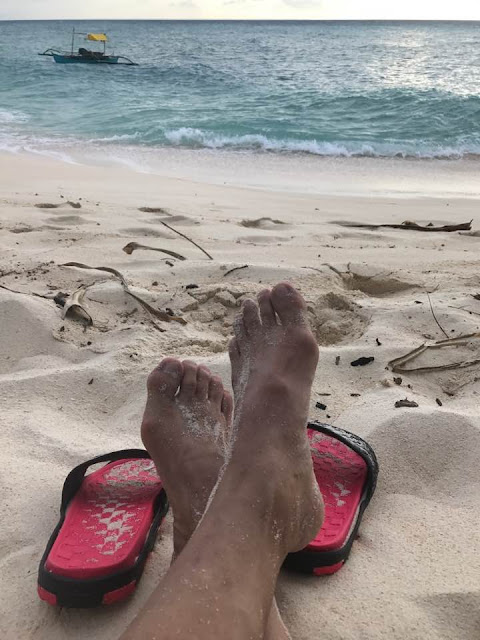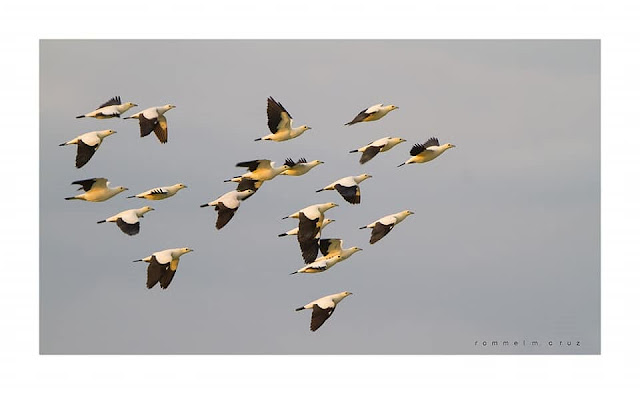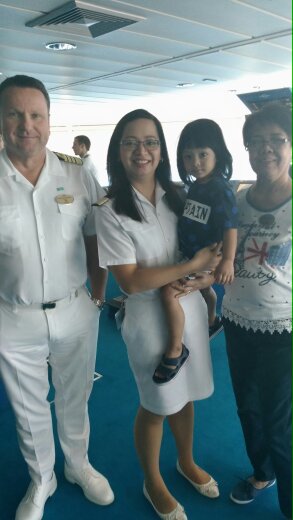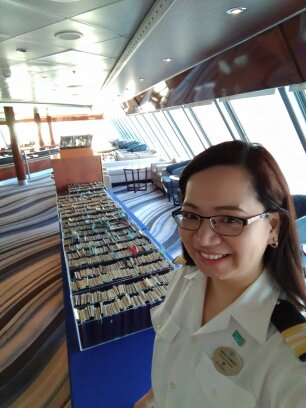Business Mirror
June 14 2014 issue
Had Robert Hitchcock seen this island, it could have been
the location of his famous movie, “The Birds”. The only difference is, they are
not menacing crows and do not violently attack humans. Instead, they give you expressions
of wonder and awe.
For those who do not know, Ursula is a one-of-a-kind bird
sanctuary, the country’s best-kept secret for a lot of reasons. It is located
in an island off Rio Tuba, Bataraza town, Palawan, far remote from civilization.
It is actually an islet off-the beaten track that looks like it has been spit
out from Palawan mainland twenty kilometers away.
The virgin landscape is carpeted with the purest and whitest
sand you’d ever seen, and most likely, you’d pick your jaw on the beach floor once
you step into its realm.
Ursula probably got its name from a British folktale about a virgin martyr. It makes sense because British James Brooke, the self-proclaimed white King of Sarawak and Borneo traveled to southern Palawan in the 1860s, and one town, Brooke’s Point (where Bataraza used to belong), was named after him. The island’s martyrdom as a bird refuge best explains this theory.
The fringes of Ursula thrive with wild “Pandan” foliage, abundant with pineapple-looking fruits that also resemble
like Japanese lamps scattered around the whole topography. When they are ripe,
they explode with red-orange hues, and the way they display their iridescent presence
validates the saying – Nature is the best art director.
It has been promoted in the past as an eco-tourism
destination but failed to get a sizable amount of visitors because of
inaccessibility, lack of safe mode of transportation, and the continuing
debate: Should it remain a bird sanctuary or open it to the public for tourism
purposes.
Ursula Island is notable for a large concentration of Pied
Imperial and Grey pigeons that roost for the night in the island’s pristine
territory. Along with that, flocks of White-Collared Kingfisher, Macklot’s Sunbird,
Pygmy Flowerpecker, Chinese Egret, Scops Owls, Megapode (“Tabon”), Eagles and the
Nico Bar (“Siete Colores”) make the island as their permanent address.
Only three people live in the island - the forest rangers
from DENR (Department of Environment and Natural Resources) who alternately
guard it from poachers of varying degrees. The rest of the inhabitants are
birds, birds, and more birds, including giant sea turtles.
A huge Palawan Eagle perches on top of a tree about 100-feet
high by the island’s seafront entrance. He has sequestered the tallest tree in
the island as his own dominion. Depending on his mood, you may catch him
swooping down on schools of fish, or he may just be gallivanting at different
directions, playfully wanting to catch your attention.
When it is summer, the weather in Ursula is torridly hot
you’d feel you’re directly astride the planet’s equator. That being said, you
may need to seek shelter underneath trees or wild bushes to escape its punishing
heat.
There are no resorts in Ursula either.No fancy Caribbean-like
amenities. Not even primitive cottages. You literally lie, sit and sleep on the
beach, on a rock or piece of a tree trunk washed ashore if you’re lucky to spot
one.
There are no maids to ask if you’ve had breakfast. You
don’t see ambulant vendors selling whatnot to tide you over. No fruitshakes or
bottled water you can buy to quench your thirst. No ceramic bowls to sit on when
nature calls. You had been forewarned that this is an expedition and you
ordinary mortals, must live here in a manner castaway Robinson Crusoe did in “Mas
a Tierra” island.
To admire Ursula’s lonesome winsomeness, you have to shed
off your urban lifestyle. At night, the sky is your rooftop, the balmy winds,
your blanket, and the stars, your shimmering bright lampshade. The thought of
being surrounded by thousands and thousands of birds competing with a symphony
of crickets is your Spotify music.
The waters in Ursula gradate from emerald green to sparkling turquoise
blue. While you wait for the ‘Grand Spectacle’ everyone is looking forward to,
what to do?
Swim, dive and snorkel to your heart’s content. Cavort with
manta rays and countless varieties of fish species -all resplendent in vivid
colors the way National Geographic would describe them. Explore the island and
circle it by foot. In just about half an hour, you’ll be done.
Be astonished with an abundance of marine wonders along the
way. Sit with seagulls on the rocks. You may chance upon Megapode (“Tabon”)
birds and turtles laying eggs (at nighttime) on a secluded shore. Go wild taking
photos of the islet’s avian inhabitants. Penetrate the inner sanctum of the
forest (ask permission and go with resident guides). Or just thank God you made
it to the island.
A cloud of birds
Wait, those are just appetizers. The visual entrée or ultimate
reveal, we are referring to, is the sight of birds returning to the island just
before sunset. When it is thirty minutes past five, it is to your best interest
not to blink. The main beach facing west will give you a ringside view of what
is going to unfold.
All set? Now look up. Get ready for a sight you’ll probably
never ever see again.Behold, from initial groups of tens and twelves, the birds will
be in batches of twenties, thirties, and then fifties, and by the hundreds. As
they come home from the mainland and neighboring islands, they will start to blacken
the sky.
 The interval will soon be in faster, hairraising succession. Before
the sun finally disappears, their number will grow by the thousands. Wheeling
like some kind of a hypnotic cloud, they would become one of nature’s most mesmerizing
sights. Like starlings roosting for the night, cooing and making myriads of nocturnal
sounds.
The interval will soon be in faster, hairraising succession. Before
the sun finally disappears, their number will grow by the thousands. Wheeling
like some kind of a hypnotic cloud, they would become one of nature’s most mesmerizing
sights. Like starlings roosting for the night, cooing and making myriads of nocturnal
sounds.
By five in the morning, you would witness “The Flight Redux”,
a repeat of what happened last night. The same avalanche, the same sequence,
only outward bound. Starting with the same number of batches, the reverse would
be replicated. This will be your morning breakfast. The birds will now hie off to
the mainland and hunt for food. The cycle of life goes on.
Wild
expedition leader
Our world is full of wonders. Amazing places are discovered
every day. Different geographical locations and natural wonders sometimes are
hard to believe they actually exist. Business Mirror catches up with Rommel
Cruz, passionate nature lover and organizer of this once-a-year trip to give
you insights on a number of wild expeditions he has organized for Filipinos who
love extreme adventure.
“I love outdoor life,” he
opens with excitement. Raised in Palawan, Cruz wants people to explore nature in
its rawest form just like the way he does.
Cruz was already hunting
birds when he was a kid. He sees expedition trips as a venue for people to experience
wildlife, nature, local village life, and the feeling of isolation in an island.
“For me, this is the real essence of an expedition inviting people who are tired of resort life
and wanting them to experience a new kind of adventure,” he says.
Before Cruz ventured into organizing
wildlife trips, he worked for Katala Foundation, a group protecting the
diminishing number of Palawan Cockatoo, for seven years. He was initially assigned
assisting filmmakers and bird photographers in scouring the jungles of southern
Palawan. Part of his job was to comply with a number of protocols in protecting
the area. Identifying birds was part of them.
He eventually went on his
own and loosely put up ‘Wild Expedition
Palawan’ with one thing in mind: Wildlife and use the word expedition in his
campaigns.
A small team helps Cruz put
trips together. A camp manager, assistant tour leader, and a cook. As in the
Ursula episode, he required that a tour leader must be a birdwatcher.
“We have a herpetologist for mountain trips, an ornithologist for birdwatching tours and other experts depending on the kind of exhibition he is mounting.
“We have a herpetologist for mountain trips, an ornithologist for birdwatching tours and other experts depending on the kind of exhibition he is mounting.
Each trip being different
from the other and weather-dependent, has given Cruz many challenges along the
way. “We are not your typical resort trip vendors and we know that not everyone
is interested in extreme tours,” he explains.
So enamoured with the word
expedition, Cruz treats every destination as something to be explored and be
pioneering in an unconquered territory. Having built a different kind of traveler
database (adventurers on a different level) he is proud of what he has started.
When we bid Ursula goodbye,
Cruz and his team brought back bags and sacks of trash to the mainland. He
intimated that throughout our stay, his team used organic and biodegradable
stuff – from detergents, food, coffee, etc. As for me, I gave my bulky jacket
to one of the Forest Rangers in the island whose seven-year old son Javier was
my constant companion in roaming the island.
As we boarded our boat
back to Rio Tuba, Cruz says he is glad that outdoor tourism is growing. “It was
hard to invite people before,even just for camping, trekking or climbing. Now,
they voluntarily list up,” he says. 80% of those who join Cruz’ expedition
tours are foreigners while wildlife photography trips lure 30%. The rest of the
70% are domestic enthusiasts.
Looking back
When I was small and
Palawan was the country’s Last Frontier in the real sense, a ‘barrio’ just five
kilometers away seemed so distant. What about a village more than two hundred
kilometers away? It was like going to planet Pluto.
I was born in Palawan and
grew up in Puerto Princesa but I have never ever been to Ursula our teachers in
grade school gloriously told us about. Not even after attending college and
pursuing an advertising career in Makati’s Wall Street for almost 40 years. Ursula
remained just a fantasy.
March 3, 2018. Ursula
was beginning to slip away. I came back and forth countless times to my
hometown but Ursula never crossed my mind. Had I not logged on the Internet on
this once hot summer day, it would’ve escaped my mind for the umpteenth time.
April 5, 2018.It’s
now or never. After two weeks of indecision, I dropped everything and made arrangements
for the trip. I got hold of my itinerary three days before I flew. Prone to
backing out at the last minute, I was mentally prepared this time. At 6 in the
morning, my plane was hovering above Puerto Princesa from Manila. In 15
minutes, we were set to land.
April 7, 2018.I
was in a vanpacked with people whom I didn’t know from Adam. I only came to
know about them almost halfway through our trip. Because we were not introduced
to each other at the onset, I had little time to socialize and my mind was focused
on how to craft my travelogue.
I would later learn that they
were a Dutchman and his Filipina partner, a flawlessly Tagalog-speaking
American and his girlfriend, both of whom are based in Davao, a Coron resort
owner in Coron and his son, and a local lawyer. In another van rode the expedition’s
crew.
By 8 in the morning, we were
on a long and winding highway to Rio Tuba, 236 freaking kilometers
away. “This must be fun,” I said. The 6-hour trip would take us to a place I
have long been wanting to see, the oldest operating mining community in the
province, with a name as exotic as Ursula’s.
We made a stopover in Narra town for lunch. After one hour,
we cranked up the heat and pushed southward, passing through hectares and tiring
hectares of palm oil plantation in Espanola town. All throughout, the road
network was surprisingly well paved, far from the mud-and-sludge days of yore
when I first traveled to this no man’s land ten years ago.
Brooke’s Point, a quaint, lovely town soon beckoned. On the
right side of the van, I could see Mt. Maruyog’s strange summit formation with
a peak plunging 45-degrees vertically and inching close to Mt. Mantalinggahan, Palawan’s
highest mountain.
You know you’ve reached Bataraza when the soil begins to
turn orangey. “Presence of nickel,” I muttered. At the province’s southernmost
town on the mainland, you begin to inhale the scent of nickel ore.
It rained hard as we approached Rio Tuba, a grand welcome,
I reckoned. No swirling dusts to inhale for some of us who had no sleep at all the
previous night. It then stopped abruptly as we rolled down the mining village.
The first thing that I noticed: Practically all rooftops were covered with the color
of nickel and you know what color that is.
We were checked-in at Pring Pension House near the market. Now
getting closer to the eastern border of Sabah, we were virtually isolated. No
signal for our phones and nothing to do, except stroll around the village (but
within safe distance of each other). I strayed in the wet market and got a
handful of videos.
Boat to bird sanctuary
 April
8, 2018.We woke up at 5 in the morning all ready to take the Ursula
plunge. When we got to the jump-off point, it looked like it was going to be a
well-planned trip as the speedboat we were to take was already waiting for us. No
waiting and it sped away in seconds.
April
8, 2018.We woke up at 5 in the morning all ready to take the Ursula
plunge. When we got to the jump-off point, it looked like it was going to be a
well-planned trip as the speedboat we were to take was already waiting for us. No
waiting and it sped away in seconds.
Prior to this trip, DENR-Brookes Point, the local
government of Bataraza through its Tourism Officer Jun Dawili, Mayor Abe Ibba
and PNP-Maritime Special Boat Unit PSUPT Greg Togonon, SPO2 Rodriguez and Rey
Togonon of PCG had made arrangements to assist us.
The marine coast guards on our boat all looked glum, poker-faced
and seldom talked, making my fertile mind percolate with some things better
left unsaid. Fearing that they would distract me from enjoying the trip, I
immediately shut them off my mind.
I jumped into the boat and positioned myself at the rear
end so that when I take photos, no one would photobomb what I was recording from
behind. Wrong. Bad decision.The tumultuous loud slamming of waves, aggravated
by bad weather, drenched me all over.
It was also the worst spot for a senior citizen to unknowingly
choose. My companions who were safely seated near the boat’s steering area were
of no help either. Only my presence of mind,
and a grip as tight as hell, saved me from flipping over. If my previous Tawi-Tawi trip
was a breeze, this was like facing a gale head on.
We reached Ursula in less than one hour (the smallerboat
carrying the expedition crew arrived a full hour later). When the island’s
majestic view loomed right infront of us, there was another lull: We couldn’t
get ashore.
We learned that the crewmen were extra careful in choosing a spot
for us to land, so as not to crush the corals underneath. Had it lasted for a few
more minutes I would have thrown up due to the boat’s non-stop swaying.
Tourists or no tourist?
I may have found my fountain of youth in Ursula. But deeper
questions had to be asked. Should it be opened to the public? We asked people
from all walks of life. Here are some of their thoughts:
“Bird and animal sanctuaries provide an area for wildlife
to live their lives as nature intended to. History has shown that man’s
influence on their environment has been to modify and make the environment
adapt to his needs. These needs are often, if not always, in conflict with
nature’s needs. As such, sanctuaries should be protected, and tourists be
regulated. When tourists come in droves, they surely start to make the environment
adjust to their convenience. We need tourism that is less invasive,” Jackie Gamboa, Sports Entrepreneur.
“It is better that it should be off-limits to tourists as
it will disturb the island’s fragile ecosystem equilibrium,” says a UP marine expert the moment I posted
photos of the island on social media. “It is a sanctuary, and therefore, must
be closed to irresponsible tourists,” says a Palawan-based environmentalist who has been to many far-flung
islands in the country.
“A bird sanctuary that lacks protection will not serve its
purpose. We are noted for nature and our wildlife. If we can’t hold on to what
makes us stand out on global stage, so what’s new?,” says InigoAcuna, Digital artist and stage actor.
Enrico
Chee,
a Malaysian millennial who has been to the Philippines as a youth sport
ambassador says: “Without this uniqueness, there won’t be any demand for
tourism in the future.”
“Wildlife and their ecosystems are vital parts of our
country’s cultural identity. We already suffer from lack of a clear identity.
We should protect them, not destroy them,” says Fil-British Adrian Williams, a digital
entrepreneur.
Medy Beroy, a
Filipina journalist based in the US says: “As long as Ursula is protected,
local and migratory birds can live in peace and multiply abundantly in a
sustainable way. Tourists will only destroy it.”
People have noticed that the number of birds in Ursula have
diminished in the last ten years due to human encroachment on their habitat.
Opening the place for tourism purposes will aggravate the matter, according to
them.
Lastly, this is the best argument why Ursula Island should
remain a bird sanctuary, excellently verbalized by Lauren Finnessey in her published scholarly article, actually her
thesis that was submitted to Johnson and
Wales University, Rhode Island, USA:
Tourists can harm the environment in many ways, and may be unaware of what they are doing. Many visitors are there to see the beauty in nature and are focusing on enjoying themselves and not what they are leaving behind. Actions such as trampling on vegetation add to the destruction of the land.
The negative impact of tourism on national parks is a global problem. Parks in all countries and continents struggle with these issues and are looking for ways to minimize their affects. Other countries like England, Canada and some Asian countries are trying to reverse the impacts that tourists have on their natural preserved areas.
State parks have also been threatened due to their cost for rangers and upkeep. In New York, many state parks were shut down for a period of time due to budget costs and understand that they should reduce the negative impacts that people have on the parks in order to keep them around for generations to come.
Tourism in national parks is a growing trend due to the economic standing of the country and the increase in interest of “ecotourism”. Travelers want to spend time in natural and peaceful areas, but with growing numbers of tourists comes an increase in problems.”




















